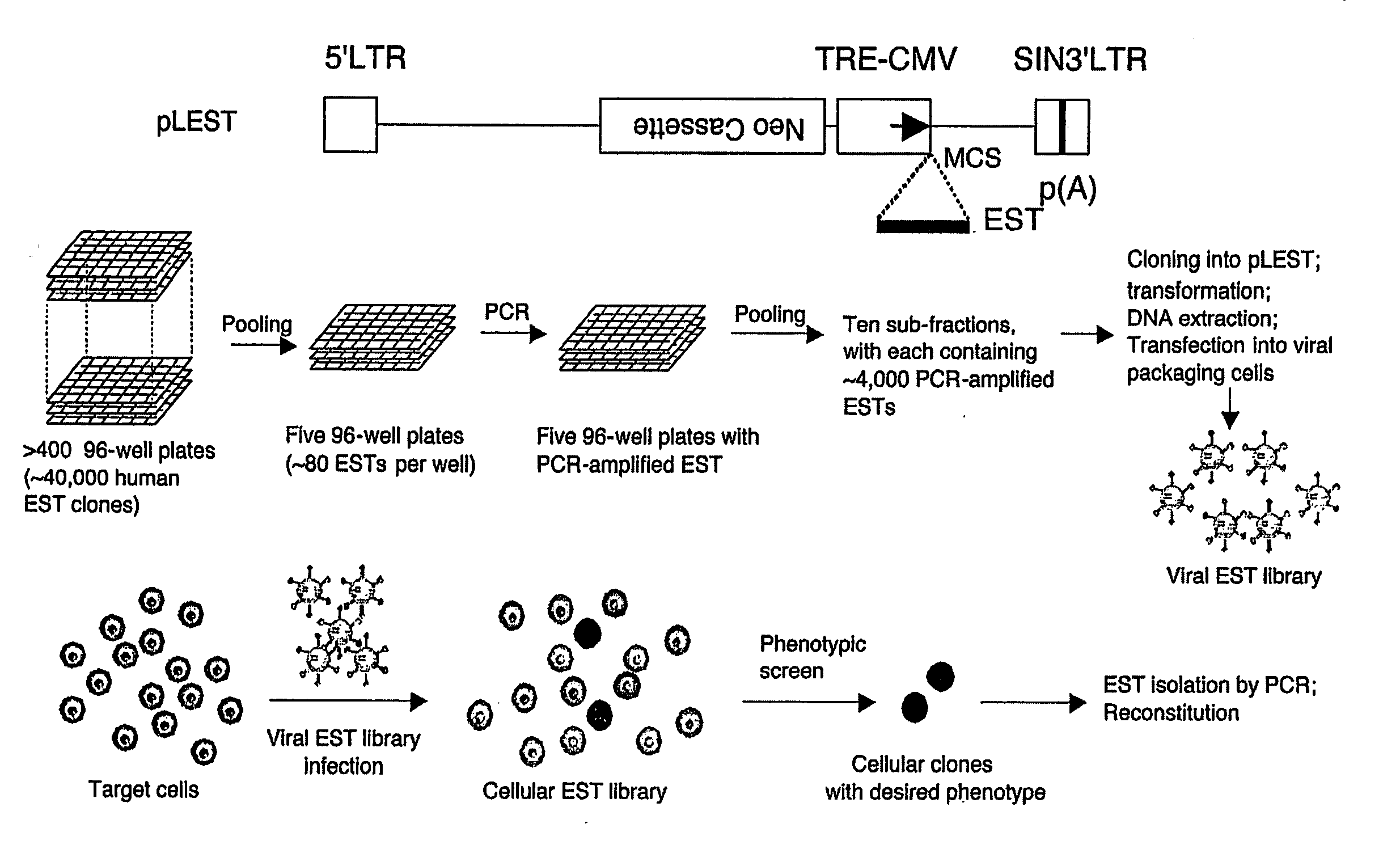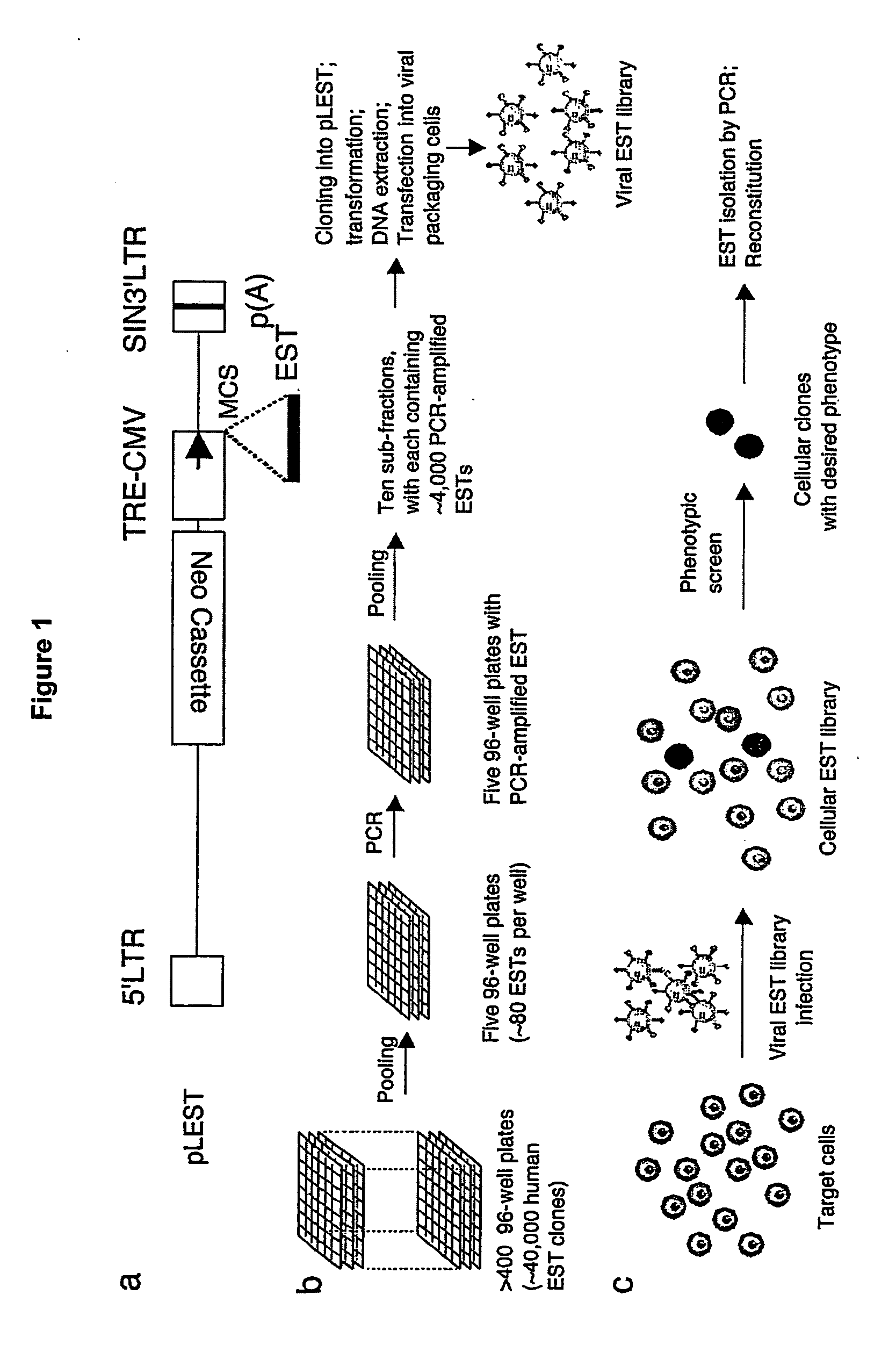Methods and Compositions for Homozygous Gene Inactivation Using Collections of Pre-Defined Nucleotide Sequences Complementary Chromosomal Transcripts
a technology of complementary chromosomal transcripts and methods, applied in the field of methods and compositions for inactivation of homozygous genes using collections, can solve the problems of inability to take the approach normally, inability to determine the biological functions of genes, and inability to inactivate both copies of the same gene in a single cell using mutational methods
- Summary
- Abstract
- Description
- Claims
- Application Information
AI Technical Summary
Benefits of technology
Problems solved by technology
Method used
Image
Examples
Embodiment Construction
[0014] Methods and compositions for performing homozygous gene inactivation assays are provided. A feature of the subject methods is the use of a library of constructs that express predefined nucleic acids, where each constituent predefined nucleic acid of the library is of known sequence that corresponds to a sequence or sequences of a chromosomal transcript, e.g., where a representative embodiment of a predefined nucleic acid is an expressed sequence tag (i.e., EST). In certain embodiments, the subject libraries are produced using an amplification protocol that preserves the sequence representation profile of the template nucleic acids from which the library is produced. The subject methods and compositions find use in a variety of different applications, including functional genomic applications, e.g., for the discovery and identification novel diagnostic and therapeutic genetic targets.
[0015] Before the present invention is further described, it is to be understood that this in...
PUM
| Property | Measurement | Unit |
|---|---|---|
| temperature | aaaaa | aaaaa |
| temperature | aaaaa | aaaaa |
| temperature | aaaaa | aaaaa |
Abstract
Description
Claims
Application Information
 Login to View More
Login to View More - R&D
- Intellectual Property
- Life Sciences
- Materials
- Tech Scout
- Unparalleled Data Quality
- Higher Quality Content
- 60% Fewer Hallucinations
Browse by: Latest US Patents, China's latest patents, Technical Efficacy Thesaurus, Application Domain, Technology Topic, Popular Technical Reports.
© 2025 PatSnap. All rights reserved.Legal|Privacy policy|Modern Slavery Act Transparency Statement|Sitemap|About US| Contact US: help@patsnap.com


